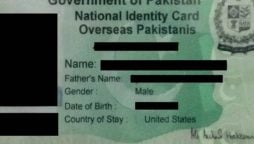UAE Dirham to PKR September 4, 2025 exchange rate
The UAE Dirham is holding steady at 76.72 PKR, showing resilience even as Pakistan battles its worst flood crisis in years. This stability comes after recent ups and downs, including a high of 77.32 PKR on August 12 and a low of 76.72 PKR earlier this week. In June, the Dirham gained 0.81 PKR, climbing from 76.44 to 77.25 and peaking at 77.61 PKR on July 1, 2025.
While the Dirham reflects the UAE’s strong economic policies and global standing, Pakistan is facing massive economic and human losses. The 2025 floods have already claimed more than 800 lives and affected 1.2 million people, putting additional pressure on the Rupee.
AED-PKR Trends in Context:
The Dirham, launched in 1973, remains pegged to the US dollar at 3.6725 AED = 1 USD, ensuring stability. In contrast, Pakistan’s Rupee floats freely under the State Bank and fluctuates with local and global pressures.
Today’s 76.72 PKR rate is slightly lower than August’s peak but close to recent levels, such as 76.74 PKR on August 29 and 76.75 PKR on August 27. Historically, the rate has shown volatility, with June’s surge highlighting the Dirham’s strength.
At the same time, floods have devastated Punjab, Sindh, Khyber Pakhtunkhwa, Balochistan, and Gilgit-Baltistan. Losses may cross $50 billion, surpassing the $30 billion toll of the 2022 floods.
Impact on Pakistan’s Economy:
For businesses importing goods from the UAE like electronics and daily staples, the slightly lower rate offers small relief compared to August’s high. But with flood-driven inflation, overall costs remain steep.
The 1.5 million Pakistanis in the UAE are sending record remittances home, boosted by the strong Dirham. In June 2025, remittances from the UAE reached $717.2 million, making it the second-largest source after Saudi Arabia. These funds are lifelines for families hit hardest by the floods, paying for food, shelter, and recovery.
Still, the high exchange rate adds to Pakistan’s trade deficit and increases debt repayment costs for loans in USD or AED. Experts urge Pakistan to grow exports and stabilize the Rupee to ease financial pressure, especially with flood recovery demanding billions in resources.
UAE’s Strength vs. Pakistan’s Struggles:
The UAE continues to attract global investment in technology, renewable energy, and tourism, keeping the Dirham strong. Meanwhile, Pakistan’s challenges are mounting. Stronger monsoon rains, glacial lake outbursts, and India’s release of water from the Thein and Madhopur dams have fueled the disaster.
More than 800 people have died, over 1 million evacuated in Punjab, and thousands of homes and crops have been destroyed. Karachi is underwater, and Gilgit-Baltistan now faces a 7-km-long glacial lake threatening more floods. Relief efforts are underway, with the NDMA setting up over 300 camps and groups like Alkhidmat delivering aid.
But experts warn that without better urban planning, resilient infrastructure, and climate funding, Pakistan will remain vulnerable.
Bottom Line:
The Dirham’s stability at 76.72 PKR shows the strength of the UAE economy, while Pakistan struggles to cope with the human and economic toll of the floods. The AED-PKR exchange rate matters now more than ever—for trade, remittances, and the survival of millions of flood-hit Pakistanis.


